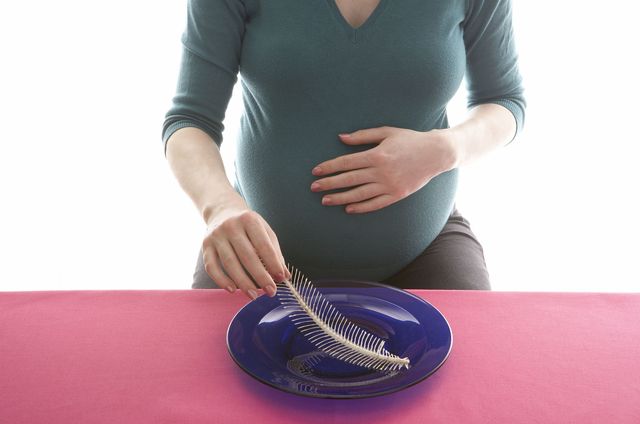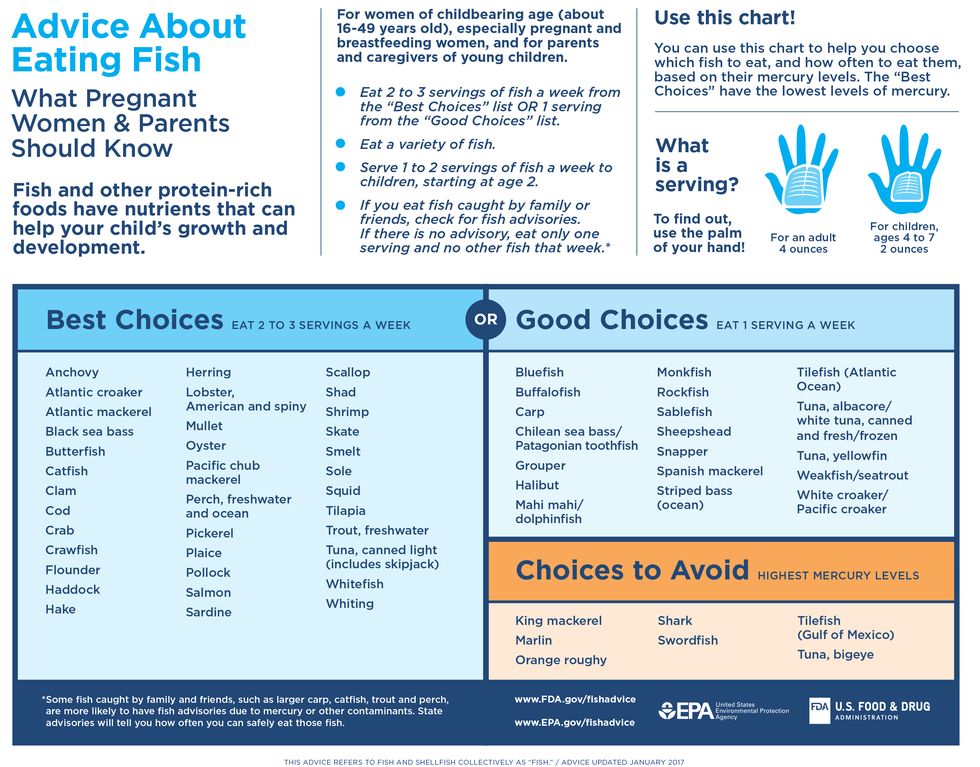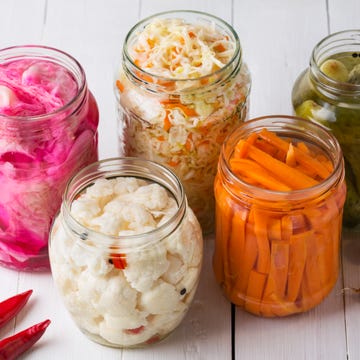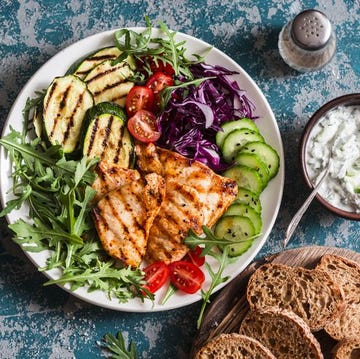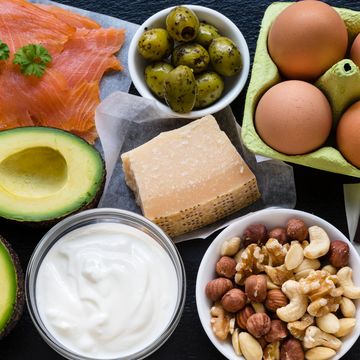How much fish is safe to eat when pregnant and nursing (and how much to feed young children) has always been a bit confusing. In an effort to help clarify the best way to avoid mercury contamination, the Food and Drug Administration and the Environmental Protection Agency recently released an update to their advice from 2004, targeted to certain women and young children. Here's everything you need to know about the new guidelines, including why some are calling them controversial.
The Background
Eating too much fish, of course, can mean too much mercury for your baby's developing brain. Understandably, this risk has frightened some women into cutting fish out entirely (21 percent, according to data collected by the FDA), and a large majority to eat much less than the recommended amount. The 2017 update aims to clear things up.
"Fish are an important source of protein and other nutrients for young children and women who are or may become pregnant, or are breastfeeding," FDA Deputy Commissioner for Foods and Veterinary Medicine Stephen Ostroff, M.D. said in a press release. "This advice clearly shows the great diversity of fish in the U.S. market that they can consume safely. This new, clear, and concrete advice is an excellent tool for making safe and healthy choices when buying fish."
The New Guidelines
According to a new chart, which ranks fish species by "Best Choice," "Good Choice," and "Choices to Avoid," along with portion recommendations, "women of childbearing age (about 16-49 years old), especially pregnant and breastfeeding women, and parents and caregivers of young children" should:
- Eat 2 to 3 servings of fish a week from the "Best Choices" list OR 1 serving from the "Good Choices" list.
- Eat a variety of fish.
- Serve 1 to 2 servings of fish a week to children, starting at age 2.
- If you eat fish caught by family or friends, check for fish advisories. If there is no advisory, eat only one serving and no other fish that week.
An illustration demonstrates how to measure serving sizes using the palm of your hand: For adults, 4 ounces is roughly the size of an adult palm, while for children ages 4 to 7, a 2-ounce serving will cover about half the size of your palm.
Criticism
But as NPR reports, some fear the government's recent update to the 2004 advice might make it even harder for moms-to-be to understand.
"You can put this in with the Chelsea Manning pardon, it's that controversial," professor of human nutrition at Cornell University and member of the government's 2015 Dietary Guideline Committee Dr. Tom Brenna told NPR. For example, says Brenna, the "Choices to Avoid" list now contains bigeye tuna, while other types of tuna can also be found in the "Best" and "Good" sections. "People won't see there's a difference between the types of tuna," Brenna said. "They'll only see that tuna is on the list."
But Megan McSeveney, the FDA's press officer, tells WomansDay.com that the categorizations are based on robust scientific data: "Some types of tuna that are bigger or live longer tend to have higher mercury levels, and that is why they are in different categories," McSeveney says. "So, canned light tuna is in the 'Best Choices' category. Albacore (or white) tuna and yellowfin tuna are in the 'Good Choices' category, and bigeye tuna is in the 'Choices to Avoid.'"
Brenna also claimed that the new guidelines contradict the FDA's 2014 report, which said, for instance, that 15 four-ounce servings of halibut a week was safe to eat (the new rule is once a week).
"The 2014 FDA/EPA draft advice that received public comment did not specify that 15 four-ounce servings of halibut a week was safe," McSeveney argues. "Rather, Dr. Brenna appears to be referring to a 2014 FDA report entitled 'Quantitative Assessment of the Net Effects on Fetal Neurodevelopment from Eating Commercial Fish (As Measured by IQ and also by Early Age Verbal Development in Children),' which was one of many resources used by FDA in its risk management decision-making process to draft and finalize advice."
Other critics say the chart could cause women and kids to consume too much mercury in tuna, while still others point out that the same type of fish in different regions can contain varying levels of another contaminant, polychlorinated biphenyls (PCBs).
In response, the FDA maintains that their recommended servings "fall well within the the safe mercury limits," and reminds us that it's important to "eat a variety of fish, not just the same type every time you eat fish."
As for regional differences? "FDA and EPA defers to state and local health departments or fish and game agencies to supplement our advice based on locality as appropriate," McSeveney says. "Our advice specifically directs the members of the public who catch their own fish to check state and local advisories ... for both fresh and marine waters. Additionally, we remind people in our outreach materials that it is a good idea to remove skin, fat, and internal organs where other types of harmful pollutants may accumulate for fish you and your friends catch before cooking these fish. This is particularly true because fish from some local waters may be more likely to contain other contaminants."
